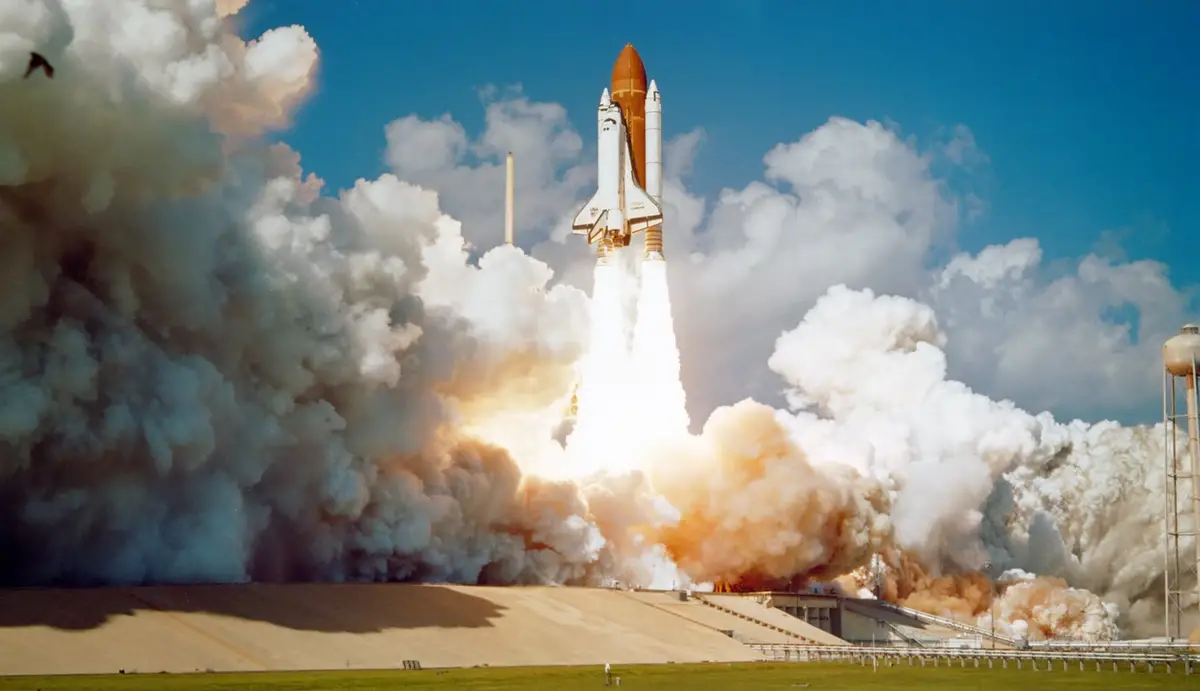
As children, we have always gone to bed hearing tales to explore space. Would we reach Jupiter one day or explore the massive rings of Saturn?
Whatever your fantasy was, the International Space Station, or ISS, is the biggest man-made object to orbit the Earth. It is located very far away and has been in existence for over twenty years.
Keep reading to know all about the ISS and how long it takes to get to ISS with the resources we have.
How Far Away Is The ISS From The Earth?
You might think the ISS is quite close to the Earth, as it can be seen with our naked eyes as a tiny point of light. In reality, it is at an altitude of 253 miles from the Earth and keeps losing altitude due to the atmosphere’s pull.
This initiative was a result of the collaboration of NASA, Roscosmos, JAXA, CSA, and ESA. The ISS was a partnership between various countries, including:
- Japan
- Russia
- Europe
- Canada
- The United States of America
Despite losing some altitude, every two months, the ISS has its orbital height corrected with burns. To reach the space station from our planet, we will have to consider the height (distance) of the ISS as well as the speed with which it is orbiting the Earth.
How Soon Can We Reach The ISS?
In simple terms, it depends. It takes a typical spacecraft anywhere between six hours and two days to reach the ISS. Can you believe that the shortest time taken to reach the ISS was a miraculous three hours and three minutes?
This was achieved by a Russian spacecraft named Soyuz MS-17. But we cannot conclude by this that with a fast and equipped spacecraft, we can reach the ISS in record time. The timing for arrival and the height of the space station matter greatly.
It is interesting to note that Elon Musk found a way around this with his aerospace company, SpaceX. This has been used to deliver supplies and equipment, among other things, to the ISS since 2012.

In 2020, SpaceX did the unimaginable and managed to transport people to the ISS using their Crew Dragon spacecraft. This resulted in four people reaching the ISS during three missions with a minimum time of just twenty-one hours!
How Do We Get To The ISS?
It’s time to delve deeper into the process involved. We know that to travel to the ISS, we will need to synchronize a variety of rocket burns and engine firings. But how precisely must they be timed to reach the ISS based on the existing weather conditions at that time? And how big a role does the distance and speed of the ISS matter during this?
Let’s cut to the chase and find out! Here are the steps followed to project a rocket into space to reach the space station:
The Liftoff
Every launch begins with liftoff, which is when the rocket leaves the ground. It begins its ascent into space and the astronauts within prepare to spend the next few hours in the galaxy.
To project the rocket upwards with maximum force, the engines are fired up, and the rocket is thrust into space. With this initial force caused, the rocket will be propelled further up and begin to move forward on its own.
Activating The Orbit
It is during this stage that the rocket transitions into an orbital trajectory. It refers to the portion of the solar orbit that takes the spacecraft from one planet to the other. This lasts around two minutes, and the orbital trajectory gets activated.
At times, the duration might increase or decrease depending on the specifications of the rocket. If the number of people within it is more in number or if the rocket itself is heavier than average, it might take a bit more time.
Phasing Burns
This is the stage when the rocket has already begun its ascent into space and has formed the path to be followed to get to the destination. Now we need to ensure that the rocket reaches its destination safely.
This is why the phasing burns begin and the engines are fired in short bursts. This will make changes to the rocket’s course and will in a way fine-tune the trajectory followed to reach the ISS.
If your concern is about how long it takes to reach the ISS, the next stage will confirm it for you.
Initiating The Approach Procedure
This is where things get tricky. The rocket reaching the ISS has entered orbit and must now enter the space station. The two orbits must be calculated accurately to ensure that the descent is safe and precise.
The approach initiation stage involves calculating the orbit of the ISS and the orbit of the spacecraft to ensure they are in sync. If calculated wrongly, it could be very dangerous for both the ISS and the astronauts in the shuttle.
This is when a proximity operation is carried out and the team ensures that the rocket and the ISS don’t collide. After careful calculations, the shuttle must be positioned by the pilot. It should then begin descending into the ISS following a specific trajectory.
Docking And Descent Into The ISS
This final stage involves connecting the ISS to the spacecraft. This is done using a docking port that is connected to a socket on the ISS.
Imagine a massive plug that is pulled from the spacecraft and connected to the ISS. This is what a docking port looks like and aids in pressurization. This is what will help the astronauts enter the space station safely without worrying about finding it hard to breathe.
The pressurization process increases the air pressure inside the spacecraft and helps the astronauts move into the ISS seamlessly. The entire process is timed and executed carefully to prevent any unforeseen accidents. If executed inaccurately, the astronauts have a chance of suffocating or not being able to enter the ISS carefully.
Frequently Asked Questions
Can We See The Iss With Our Naked Eyes?
Yes, we can often spot the ISS orbiting the Earth in the night sky. It looks like a small pinprick of light that moves very slowly around the Earth. Be sure to not confuse it for a star or a neighboring planet in the solar system!
Can We Get To The Iss In A Day?
While it normally takes around three days to get to the ISS, some missions have landed in just six hours. SpaceX has even brought astronauts to the space station in less than a day (twenty-one hours). So the best answer to this would be that it depends on the conditions involved and the position of the ISS during liftoff.
What Happens If The Approach Of The Rocket Is Not Calculated Accurately?
A lot can go wrong during a space mission which is why accurate calculations and timing are crucial. The shuttle and the ISS space station might collide if they cross each other’s orbit. It is also possible to miss the ISS due to the incorrect alignment of the shuttle. If the docking port is not secured properly, the entry might not be smooth.
Summing Up
We now know how far the ISS is from the Earth and how long it takes to get to the ISS. We also know the steps involved in launching a rocket into space and make a mission successful.

With the advancements in modern technology, we can expect a lot to change in the upcoming years. What used to take days has been reduced to a matter of hours to reach the space station. And at this rate, all we can do is hope and know the facts!
